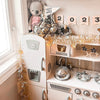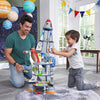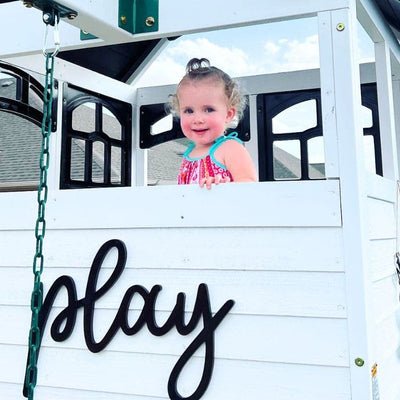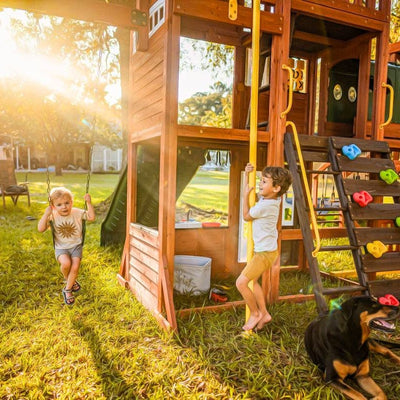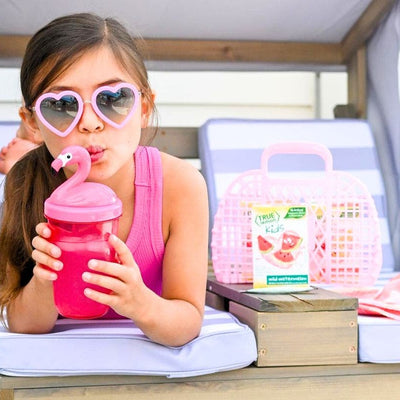How Wooden Blocks Promote Child Development

Sometimes, it’s the simple things that make the biggest impact – and that’s definitely true when it comes to classic toys like wooden blocks. Blocks are recommended by the American Academy of Pediatrics (and nearly every other similar organization) as a great toy to promote healthy child development. But how do these simple toys do so much? Here are a few of the ways blocks help kids develop and thrive!
Sensory Play
When we think sensory play, bins of colorful rice and squishy sensory bags are probably the first things to come to mind. But for babies, sensory play can be even simpler. After all, nearly everything is new to them, so any new material, texture, temperature, or sound truly fascinates them! While infants may not be stacking blocks just yet, they are learning and playing as they explore blocks’ differing textures, shapes, and weights. They also make great auditory sensory play objects as babies tap, bang, and clap them together.
Fine Motor Skills
One of the most well-known benefits of blocks are the fine motor skills that are developed as toddlers learn to stack and balance blocks. In addition to developing careful grips and lining blocks up on top of one another, they also get practice with the pressure and speed they use to add new blocks to the tower. Too hard or fast, and they’ll cause the others to tumble! These fine motor skills are the same that will eventually allow them to set a cup down gently on the table without spilling or learn to gently pet the family dog.
Cognitive Development
A child’s ability to stack blocks always shows up on lists of cognitive developmental milestones. Why? Learning to stack and build encourages problem-solving skills. As toddlers rebuild towers over and over, they begin to learn what makes them crash and what makes them more stable. By age 2, experts expect children to be able to stack 4 or more blocks and 6 or more by age 3. Mastering these simple towers means they’ve likely developed many of the fine motor and problem-solving skills expected for their age.
Open-ended Pretend Play
Symbolic play is another developmental milestone that often emerges between 18 months and 2 years of age when toddlers begin to use one object to represent another. A common example is pretending that a toy block is a car. While any type of object can be used in symbolic play, open-ended toys like blocks are great for encouraging pretend play. Because they are simple, children are often more willing to use them to represent other objects.
Positive Parent-Child Interactions
According to the AAP, “A toy’s most important attribute is its capacity to bring the parent or caregiver and the child together in playful interactions that are warm and full of rich language.” Blocks are a great toy for fostering these interactions, so take advantage of opportunities to play and chat together as your toddler pours out the blocks. You can talk about the colors and shapes, about how to make that wobbly tower a little more steady, or about the castle you're building together.
A Toy that Grows with Them
Some toys have a longer lifespan than others – while rattles and crinkle books may be baby favorites, they won’t hold toddlers’ and preschoolers’ attention. Blocks, on the other hand, can stay in the toy rotation for years as they always present new challenges! Babies love them for sensory exploration. Toddlers are drawn to the fine motor and cognitive challenge of stacking blocks. And preschoolers begin to create more complex structures and use them in pretend play.
So whether you have a babbling 6-month old or a precocious 3-year old, if you ask us, a set of blocks is a must have! Our 60-piece wooden block sets are a great place to start, providing a variety of shapes to let your little one explore, experiment, and create!

